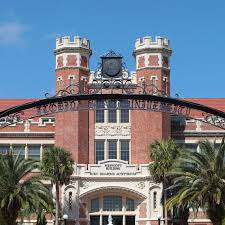Speakers
Description
The bound system of an antikaon ($\bar{K}$) and nucleons has been widely discussed based on the strong $\bar{K}N$ attraction in the isospin zero channel (I = 0). The attraction leads the much deeper binding energy of kaonic nuclei compared to that of normal nuclei. The simplest kaonic nuclei system, $\bar{K}NN$, has been one of the most expected states to be observed in the interest energy region. Recently, a few experiments (FINUDA in 2005, DISTO in 2010, J-PARC E27 in 2015 and J-PARC E15 in 2019) reported the states considered to be $\bar{K}NN$. However, the binding energies and the widths of the states were largely discrepant between the experiments. The inter-relationship between the ``$\bar{K}NN$'' has not been clearly explained experimentally nor theoretically. To improve the situation, we tried another detailed experimental approach.
Our J-PARC E31 experiment which originally aimed at $\Lambda(1405)$ spectroscopy
was also sensitive to the $\bar{K}NN$ bound states via in-flight $d(K^-, \Lambda p) \pi^-$ reaction. The reaction corresponds to the reverse reaction of J-PARC E27. In January and February 2018, we took data with approximately $3.9 \times 10^{10}$ $K^{-}$'s at 1 GeV/$c$ momentum delivered to the deuteron target. The detector system was that of J-PARC E15 so that we could apply the exclusive study same as the manner of $\Lambda p n$ in E15: detecting the $\Lambda p$ pair and identifying the rest one particle using the missing-mass method. In addition to detecting $\Lambda p$, an advantage of this reaction was the charges of all the decay particles in final states. We detected the other combinations $\Lambda \pi^-$ and $p \pi^-$ in addition to $\Lambda p$ to investigate the kinematical topologies of related processes. In a preliminary analysis, we successfully reconstructed several ten thousands of $\Lambda p \pi^-$ events in total. In this contribution, we will present the latest results of the analysis of $\Lambda p \pi^-$ final states.
| speaker affiliation | RIKEN, RIKEN Cluster for Pioneering Research |
|---|

